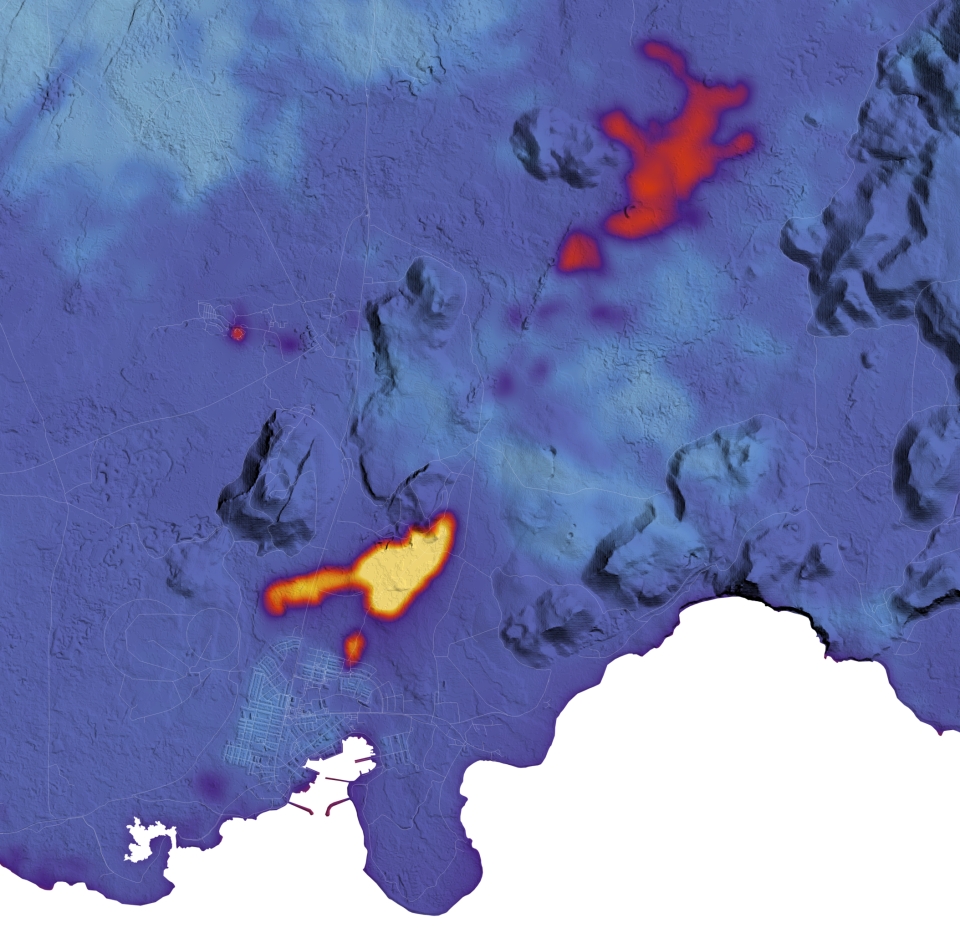Gepubliceerd op 21 januari 2024
Volcanic activity reawakened on the Reykjanes peninsula in southwestern Iceland with a pulse of eruptions in mid-January 2024. Over the course of about two days, new fissures released lava near the town of Grindavík. A human-constructed barrier diverted some of the flow from one fissure away from town, but lava from one closer to Grindavík engulfed several homes.
The eruption occurred less than a month after another fissure opened several kilometers to the northeast. It was the fifth eruption on the peninsula since 2021.

The latest round of eruptions on the Reykjanes peninsula destroyed homes in the town of Grindavík.
The map above indicates the location and extent of the recent activity. Data for the map were acquired by the TIRS-2 (Thermal Infrared Sensor 2) on the Landsat 9 satellite on January 16, 2024, and overlaid on a digital elevation model of the area. TIRS-2 detects thermal radiation in two wavelengths, revealing the amount of heat emanating from surfaces on Earth. Lava flows from the January 2024 eruption appear the warmest (yellow), while the still-warm December 2023 flows and the Blue Lagoon geothermal pool also stand out from the relatively cooler surrounding land. Scattered clouds (light blue) account for areas with the coolest temperatures.
A fissure eruption began at 7:57 a.m. local time on January 14, 2024, approximately 1 kilometer away from Grindavík. It followed several hours of increased seismicity, according to the Icelandic Met Office. Some lava from this fissure flowed toward town, while some was diverted to the west by barriers of earth and rock constructed starting in November 2023 when the risk of imminent hazard became apparent.
Read the rest of the article
over on NASA's Earth Observatory website